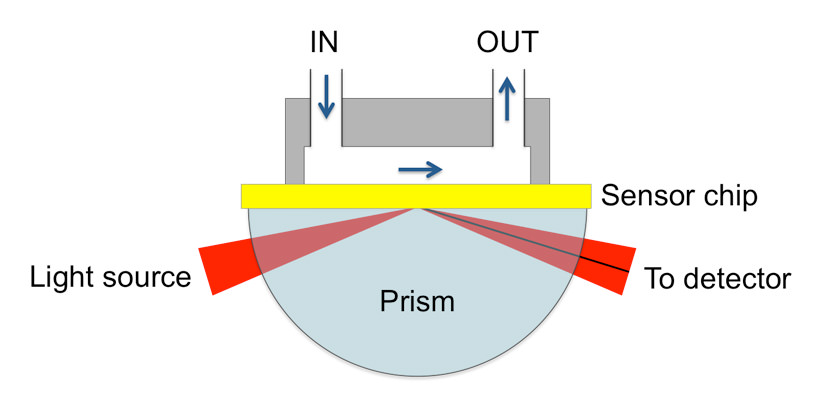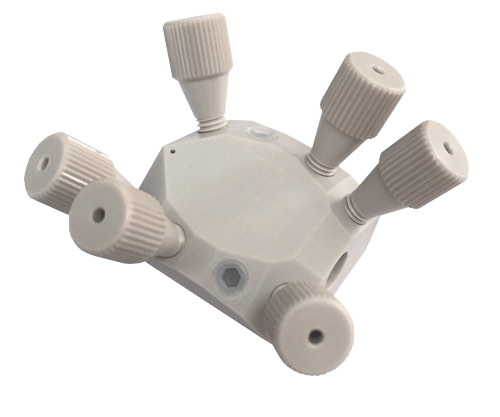Flow injection SPR allows SPR analysis to be carried out in a continuous liquid stream.
Most current bioaffinity studies involve monitoring the analyte or target in solution with the recognizing (probe) species immobilized onto the SPR sensor chip. The injected sample plug is diverted to the SPR flow cell by a carrier (buffer) solution, while the change in the SPR signal is monitored as a function of time.

FIG. 1 A carrier (buffer) solution flows continuously across the SPR sensor surface. A sample solution is injected into the carrier solution via the injection valve (not shown in the figure). Binding of analytes (measured in the form of SPR angular shift) from the sample solution onto the sensor surface is monitored and a sensorgram is produced.
The resultant SPR-time curve (sensorgram) can then be used to extract the binding constant between the probe and the target. In many cases, a Langmuir isotherm is used to simulate a series of SPR-time curves obtained at different analyte concentrations. The simulation will yield the association (ka) and dissociation (kd) constants and binding affinity (KD).
We offer two types of flow injection analysis modules:

BI-DIRECTFLOW™ ANALYSIS MODULE
For advanced multi-channel ultra-fast kinetics research
*included in BI-4500 series and higher models

FLOW INJECTION ANALYSIS MODULE
For three-channel flow injection SPR research
*included in BI-2500 series only
